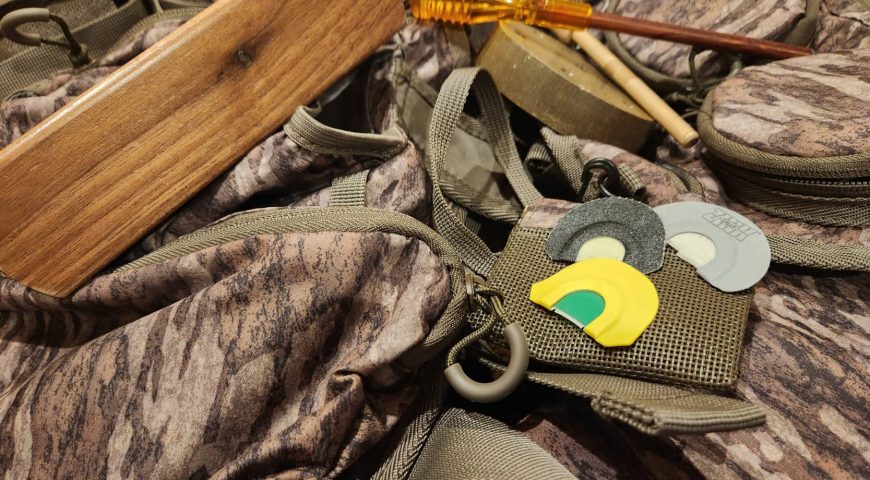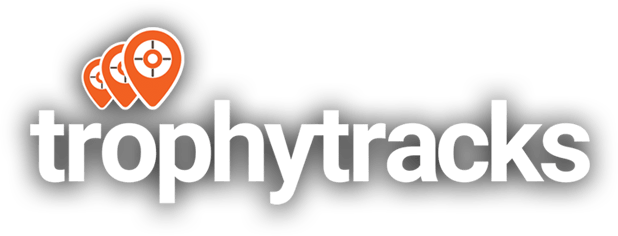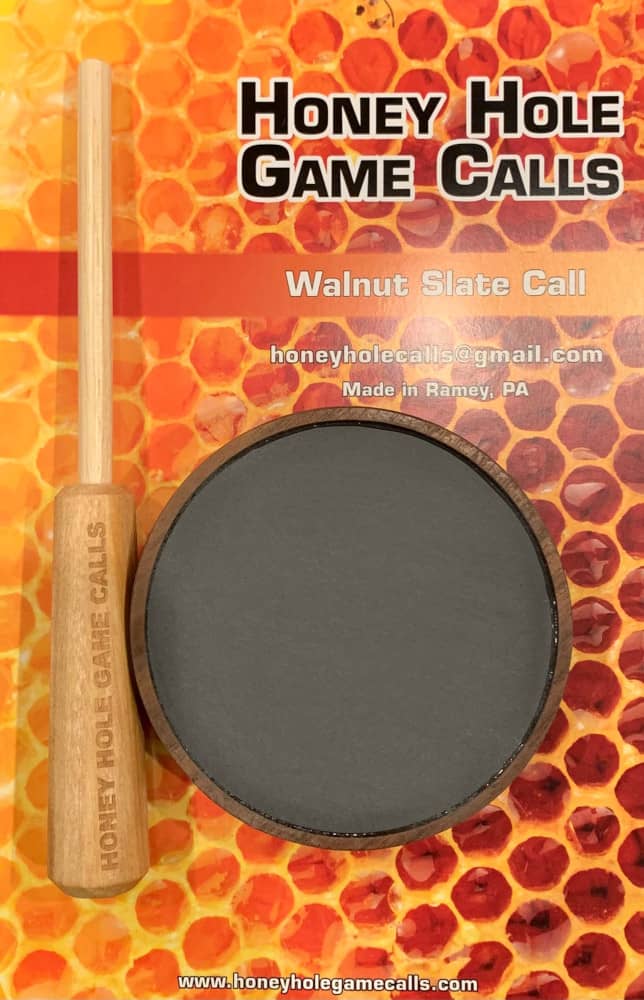
The Best Turkey Calls on the Market
With spring turkey season right around the corner, most of us are already updating our turkey calls. A good call can be the difference between a successful hunt and a very disappointing day. Finding best turkey calls that you can create realistic imitations will increase your opportunities for better gobbler responses.
There are multiple types of turkey calls and they have different purposes. The turkey hunting industry is continually pushing for better-sounding calls. This gives us as hunters a huge advantage. With call technology improvements, calls are sounding more and more realistic and are becoming more versatile.
In this article, we are covering the most asked questions about the best turkey calls on the market for spring turkey hunting and giving call recommendations for every question. Our recommendations are based on personal experience, call performance in competition, and call ratings. We will bring attention to call companies that manufacture the best calls regardless of their popularity.
We Are Covering:
What is the most realistic turkey call?
What turkey mouth call should I start with?
Who makes the best turkey mouth calls?
What is the easiest turkey call to use?
Is glass or slate a better turkey call?
The best turkey box call.
What is the best call to locate turkeys?
Let’s jump in.
What Is the Most Realistic Turkey Call?
Diaphragm calls (mouth calls) are the most realistic calls when used properly. Mouth calls have the greatest range of use, and can be used for soft and loud calling. The structure of your mouth will change the sound of the call. A call that works well for someone else may not be the best for you.
We recommend a three-reed prophylactic/latex call for ease of use and the best effort-to-sound ratio. Diaphragm calls will have several cut options. A call with more jagged cuts generally will be raspier and easier to make “cackles” and “cuts” with. One hunter will not get the same noise out of a call that another will. We think it is wise to invest in a few mouth calls with different cuts to identify what works best for you.
We recommend a “w” cut for clear crisp calling, a modified batwing (batwing with a center slit) cut for more rasp and easier cackling, and a “cutter” cut for more rasp and louder cutting.
Recommended Diaphragm:
Hunter Wallis Series by Rolling Thunder gives off an amazing crisp tone and is good for every scenario of a turkey hunt. This call is in a batwing cut and is truly impressive. It was designed for a legendary competitive turkey caller so you can be sure this is a great set of mouth calls.
What Mouth Call Should I Start With?
The best mouth call to start with is a double-reed latex or prophylactic call. These mouth calls are easier to blow because the material is thinner and more flexible. The added flexibility makes the call more forgiving and allows you to learn the correct pressures to use on your call.
Latex is a stiffer material than prophylactic, but we recommend a double read over a single reed because you will be able to get a more realistic sound. You will also learn how to properly modify pressures to get the needed sound out of the call. It may be challenging to learn how to use a mouth call at first, but after consistent use, you will find them to be a very easy call to use.
Recommended Call:
Zink Wicked Lady Double Reed. This call is extremely easy to get a good and clear sound out of. It features a batwing cut that makes for easy manipulation for all types of sequences. It’s very impressive for its simplicity. It is not only a good starter call; it will also be used by accomplished callers.
Who Makes the Best Turkey Mouth Calls?
This one is up for debate. Everyone seems to have a favorite call, but we are going to stick to what we know.
The best turkey caller of our generation is Hunter Wallis. He is a nine-time grand national champion, two-time world champion, has won the US Open twice, and has 10 Pennsylvania state champion awards. He has used Zink Game Calls and Rolling Thunder. We can trust that someone performing at that level is using the best quality calls.
From our analysis, Zink makes an easy mouth call to use, and Rolling Thunder’s Hunter Wallis Mouth Call series gives a clear and crisp sound.
Worthy mention: Mountain Hollow Game Calls makes several quality mouth calls that have won multiple calling competitions. We have yet to hear one that did not perform well or sound amazingly realistic when used by a good caller.
What Is the Easiest Turkey Call to Use?
The easiest turkey call to use is a push button box call. It makes soft and realistic clucks, yelps, and purrs. This call is great for the beginning turkey hunter or for use as a finishing call. Very little movement is needed to make realistic calls.
My dad taught me how to call turkeys with a push button as a toddler. It is very easy.
By pushing the button, the paddle of the call slides across an interior-mounted striker. That movement produces friction and therefore noise. All of this is contained in a small light box.
This call is so underrated. It is simple but works great.
We recommend the Mountain Hollow Cackle Box, Quaker Boy Easy Yelper, and the HS Strut Push Button Yelper.
Is Glass or Slate a Better Turkey Call?
Glass puts out a sharper louder call great for reaching long distances. A slate call gives a soft clear sound that is great for early morning and evening calls as well as finishing as a gobbler closes the distance. Slate is useless in the rain whereas glass continues to make noise.
Aluminum is also used in the rain with good success. An aluminum friction call gives off lots of volume and sounds different than using a glass or slate call. It has more of a piercing sound great for long-distance calling or gobbler locating.
Some turkey call companies offer a double talk option that has slate and glass in the call. The slate is accessed on one side and the glass on the other. This is great for a hunter that likes using a slate call but needs to be able to use it in the rain.
Generally, you get what you pay for. A custom or hand-made call with exotic or hardwood wood will put out a much different sound than a mass-produced or plastic pot call.
Honey Hole Game Calls makes a great glass-over-glass friction call, as well as a solid handmade slate call, right here in the USA.
Turkey Call Striker Choice
One of the biggest factors in the crispness of a slate or glass turkey call is the striker you use. A softwood will give off a soft sound. Hardwood will be crisp and loud. Soft wooden strikers soak up the rain on wet days and will be harder to get sound out of. Some composite strikers are available that will work better in the rain.
The striker I am absolutely loving is the Diamond Wood striker. It is worth the expense and will make your call sound far clearer. A striker with a narrow tapered tip will be good for higher notes and Kee Kee’s, and a mushroomed tip is good for yelping and cutting. Striker quality is pretty similar across manufacturers. They are mostly made from the same materials so one company is probably not much better than another.
Best Turkey Box Call
A good box call puts out a loud, clear, and realistic sound. The Lynch World Champion has been the most dependable, proven, and loved box call of the last 70 years. The call is made with impressive workmanship and mimic’s both a hen and a gobbler. One side is Walnut and the other is Mahogany.
By having the flexibility to have multiple sound profiles out of one call, you increase your chances of success. It is important to care for your box call and keep the paddle chalked to continue getting good clear calls from it for years to come.
What Is the Best Call to Locate Turkeys?
The best call to locate turkeys depends on the time of day. In the early morning, an owl hoot makes a great locator call. After the sun is up and into early evening, crow calls are a realistic way to get turkeys to gobble.
It is somewhat less popular, but using a loud turkey call (diaphragm, box call, or friction call) makes a good locator call. You need to make sure to keep the call realistic, warm up into excited sequences and then close out realistically to avoid giving away your identity.
One caution we would make: using a turkey call to locate turkeys can lead to setting up in locations that are less than pleasing. If you hunt “run and gun” style and cover a lot of ground, many times you can get very close to turkeys and not realize it. Once you call, you give away your location and may have turkeys headed your way.
Recommended Crow Call:
H S Strut Hammerin’ Crow Turkey Locator
Recommended Owl Hoot:
Field Notes
TrophyTracks is a hunting journal app you can log your hunt information in. You can record valuable information like which call you used and what reaction you received. This is invaluable information and is all easily logged in one location to help you strategize and plan for hunts to come. You can also log any information pertinent to hunts and record detailed parts of experiences that are likely to be forgotten.
The biggest part of turkey hunting is learning and applying knowledge. All the calls we have listed are top quality and proven performers, but practice and knowledge implementation gives you opportunities for success. Armed with the best turkey calls and proven strategies for your situation, you can head out confidently as you pursue the elusive wild turkey.
Guest Post by Evan Grimm
Evan Grimm is an outdoor content writer that dives deep into topics to produce informative and practical content. He is a TrophyTracks user and contributor, the owner of ETHIC Digital Products, and is heavily involved in non-profit ministry where he and his family now reside in Alaska.




Comments are closed.